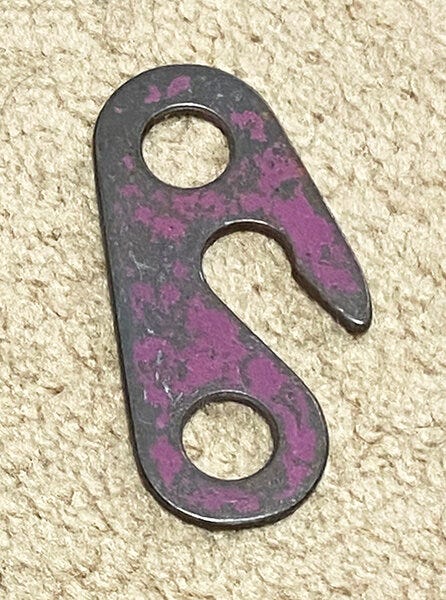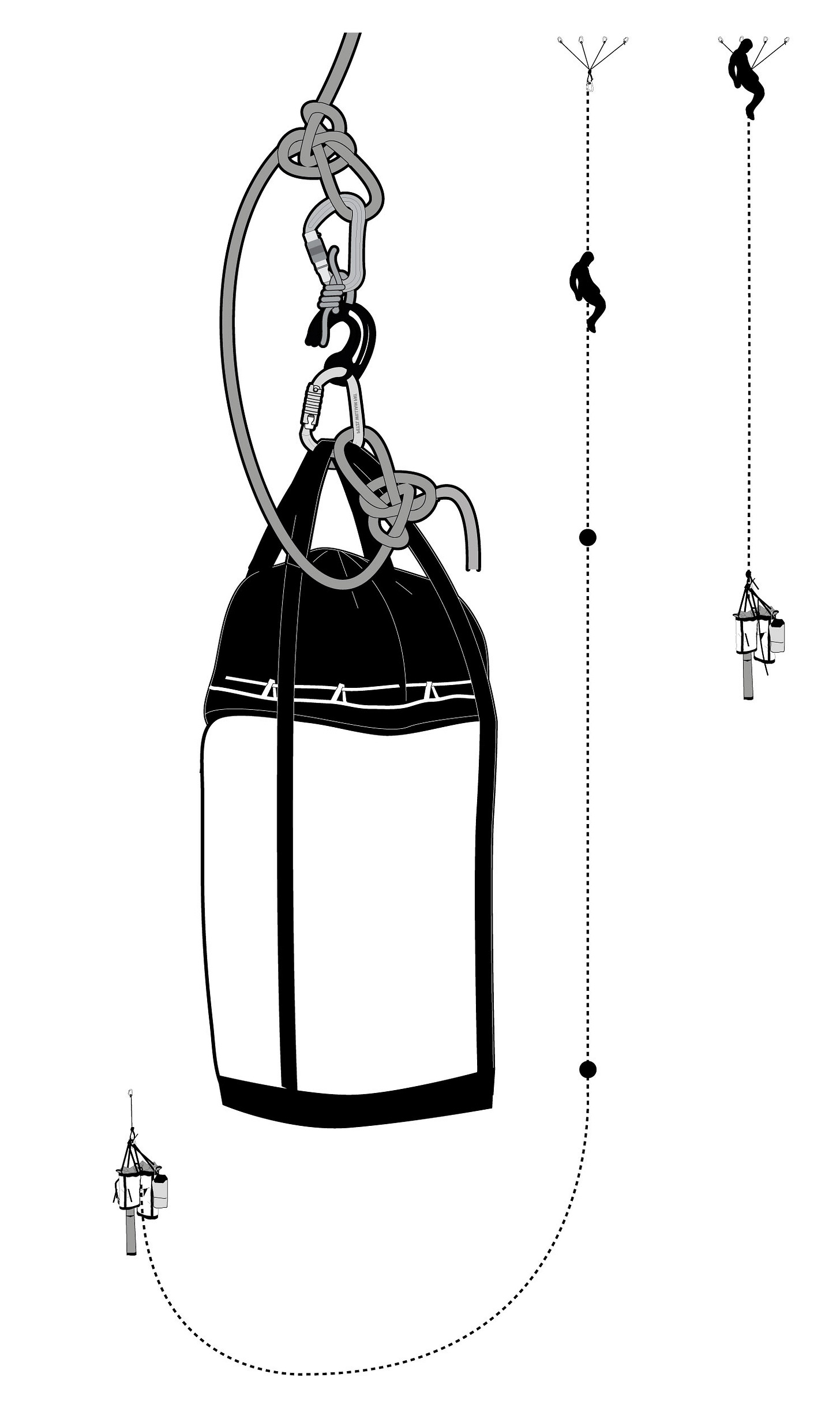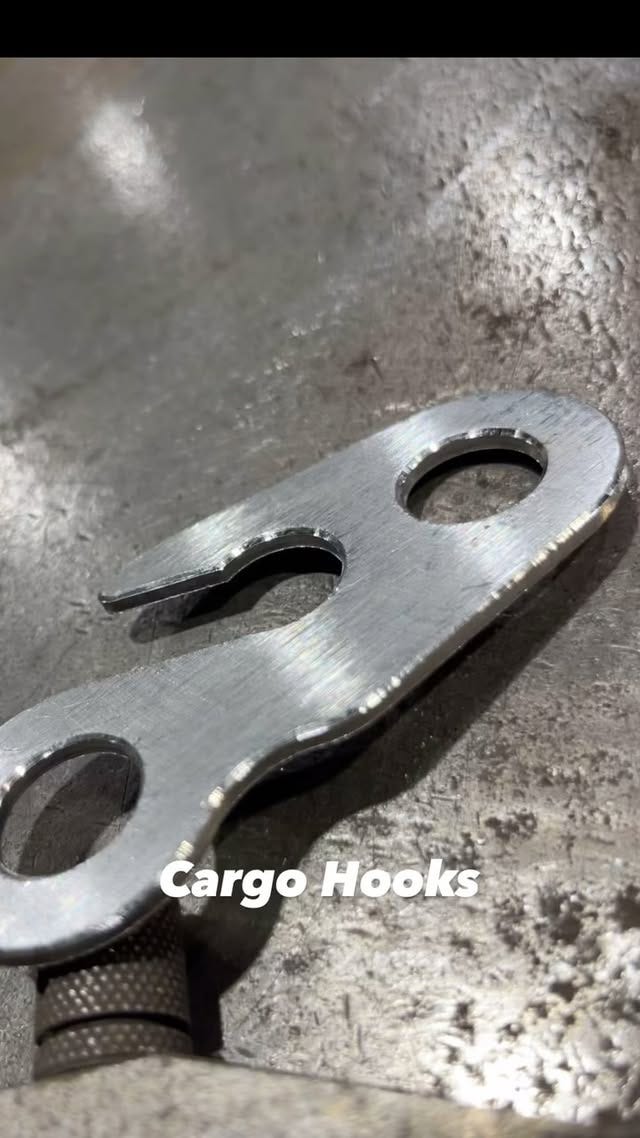Moses Cargo Hook, what’s it good for?
About twenty years ago, I was in Yosemite, I think, when I soloed the Reticent Wall, and spotted a load of odd bits of hardware in the Mountain Shop, back when they stocked odd bits (now, you’re often hard-pressed to even get a canister of gas!). Back then, there were three brands of beak, the remaining A5 Birdbeaks forged in the mid-90s (by this time, A5 had been gobbled up by The North Face, and was in the process of ending up like most things that predators devour), and Black Diamond size 1 Peckers, and Cassin Hawks (I’ve only ever owned one of these, which failed when I took a fall onto it, and so I’ve avoided them since, but people tell me they’re good). But on that day, I saw something I’d not seen before, two styles of beak that looked both chunkier, stronger, but also smaller, one looking half the size of a Pecker. They were stamped with a V, and were made from someone called Vermin, which explained why these beaks were called Seam Weasel. The cable on these beaks was also much thicker, and looked like something hand-forged by some master big wall climber and blacksmith (and they were). There were also two types of micro blade/RURP, half and two-thirds smaller than a Black Diamond RURP, and designed for horizontal placements unsuited to beaks. Several medium to massive Vermin hooks also hung, and although I wasn’t flush with cash, being a minimum wage big wall climber, I bought several of the larger beaks and a set of RURPs (not the smallest beaks, or the hooks, as I mistakenly thought them too small, or too big, to be of use, something I’d regret on many future walls), all of which I’ve held onto ever since. It’s testament to their maker that they’ve survived dozens of walls, while others have not (beak blades tend to just disintegrate).
[If you want to know more about the history of beaks, go here].
One other item I bought, even though I didn’t even know what it was, which is why I bought it, was something called a Cargo Hook, which looked like some kind of super strong fifi hook. The hook came with no instructions, but featured a large hole at either end, big enough for a karabiner or rope, and a large hook in the centre, which featured a slight notch into which the hook would sit when loaded.
Asking around, I found out that these exotic pieces of hardware had been hand forged by a big wall climber, and rock hard-man called Forest Gardner, and were based on a long series of hard first ascents and speed climbs, that Forest had left the valley, moved on like most climbers did, and that was probably the end of Vermin (eventually, all lost boys must take off their costume, put on a suit, and get a proper job).
Although I had no instruction manual for my Cargo Hook, I bumped into the late Fly’n Brian McCray in the cafeteria one morning, and he filled me in. The hook was designed to accommodate some major big wall solo sketch, and was meant to allow you to hang all your haul bags off it, so as to allow you to do a counterbalance haul, meaning as you rapped a pitch, as you went down, the bags would lift off the anchor, and go up as you went down (if you can’t see the several obvious ways this could end up getting you killed, then you should take up big wall soloing). The idea of the hook was to remove a few of these ways to die.
First, it was not going to break, which is not a given with standard fifi hooks, which can break or bend under pretty small loads.
Next, it could accommodate full-size locking karabiners, quick-links, or full-size ropes (11mm), so you could do away with trusting little loops of 4mm cord through the top of a fifi.
Next, it was shaped in such a way that it would be harder for the hook to disengage if pulled down, due to the shape and depth of the hook, rather than lifted. This might give you a little more confidence if your 20kg tag bag fell while leading, and this pulled out 60 metres of static haul line, the whole impact coming onto this hook (if the bags were to be pulled off the belay, I don’t think there could be any other outcome than death).
I suppose one reason why Vermin and Forest never made this a full-time gig is that even if every big wall climber on the planet had bought everything he made, there were so few of us, he could have bashed it all out in a week to fulfil all our orders, but worse, no one would need a top-up for a decade or two (that’s the downside of well-made stuff). This is why, if you want to make something for climbers, instead of making the best, most robust chalk bags climbers have ever seen, just make the cheapest chalk.
But somewhere along the line, I did what I seem to have done with a lot of my best gear, I lost sight of it, either lent it to someone I should not have, or gave it away, thinking I could just buy another, or lost it, or left it, or had it stolen away.
All I know is that I missed it, and had to make do with lesser fifis for problem-solving problems even more niche than remote hauling. These things have included doing remote hauling from multiple rope-tied ones to another when soloing capsule style (you leave all your bags on hanger belay 5, and jug all your ropes, detaching them from anchors 6, 7 and 8, and then haul the bags to 9). I’ve used this technique several times on the Nose, hanging my bag on El Cap tower, and then hauling in a one’r to the top of the Boot, as well as from pitch 16 to 19 (you need a very long haul line, and might have to tie your lead and haul line together, and self-belay, to make it). And there have been loads of other places where I need to hang my bags, so I could go up and haul, without having to come down to release them.
Without my cargo hook, I was forced to use two fifi hooks taped together (still a fraction of the strength of a Cargo Hook), or a karabiner with its gate tape open (not as secure, as the bags are not really captured by the karabiner, plus a karabiner is not a fifi shape).
Really, the Cargo Hook was a little like a get-out-of-jail card, like a Beal Escaper, or ice threader, or an EPIRB, something that just gave you a little extra room to overcome some hurdle.
But for years, I kept an eye out for a used Cargo Hook, would ask around on forums, or pester shop staff in US outdoor shops, the kinds of shops that might have one in a drawer somewhere. I even tried to track down Forest and ask him to make some more, maybe through Kickstarter, but without luck.
I then wondered if I could get someone to make me one, but by now, I’d forgotten just what it looked like, but there were few takers, as making runs of one is far too costly.
But eventually, after many tries, I tracked down someone on Mountain Info who had a cargo hook in some dusty corner of their kit locker, who did not want to part with it, but who said he’d make me a new one, which arrived in the post a month later (I tend to find there are far more Yanks who can make stuff like this than Europeans).
But, as it happens, something had piqued the interest of someone during my earlier badgering of exotic gear makers, namely Theron Moses, or Moses Tomahawk fame, a man who’s most definitely following in the footsteps of the hardware masters, like Chouinard, Denny Moorhouse, Hugh Banner, Ed Leeper and Forest Gardner.
Originally, I talked to Theron about doing a Kickstarter, to see if there were a few hundred climbers worldwide who might want a cargo hook, a device that was not just limited to aid climbing, but general big wall climbing, free or aid, but also perhaps rescue? Running such campaigns is never that easy, or as simple as you imagine, especially when your only reward would be a single cargo hook, but luckily for me, Theron just went and made a bunch of them.
I suppose the aim of this article is to highlight a great piece of gear, that is also very well made, and made by a hardware master, that a lot of climbers will have no idea exists, or that they might need, and that only costs $22 (even if you don’t climb, I think such things are things of beauty).
Be warned, though, I don’t think the new version, like the old version, comes with instructions, but perhaps that’s for the best.
If you want a hook, go here (and buy an excellent “Climb Like Tom’s Watching’ T-shirt while you’re at it!).






